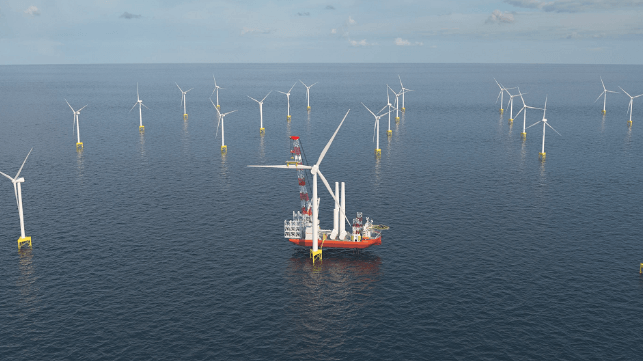Rystad Predicts a Shortage of Big WTIVs by 2024

As offshore turbines get bigger, so do the vessels needed to install them - and there may not be enough of them in the years to come, according to consultancy Rystad Energy.
Wind turbines have been getting gradually bigger for a long time, and the next generation is going to be huge. In 2010, the average size was three megawatts. Today, the biggest turbines are three times more powerful than that, and models five times more powerful are arriving soon.
“When turbines were smaller, installation could be handled by the first-generation fleet of offshore wind vessels or converted jackups from the oil and gas industry. However, as operators continue to favor larger turbines, a new generation of purpose-built vessels is required to meet demand,” said Martin Lysne, Rystad Energy rigs and vessels analyst.
Excluding the Chinese market, global demand for wind turbine installation vessels will expand by a factor of eight by the end of the decade, according to Lysne's forecast - up from 11 vessel-years in 2021 to 79 vessel-years in 2030. At the end of that time frame, most of the global demand will be for vessels that can handle turbines bigger than 9 MW.
Not many vessels have that capability, and purpose-built ships will be required. There are a handful of exceptions: Heerema's giant heavy-lift crane vessels Thialf and Sleipnir could handle turbines up to 15 megawatts without modifications, and even bigger with changes.
"Out of the current fleet of purpose-built vessels, only a handful of units can install 10 MW+ turbines, and none are currently able to install 14 MW+ turbines. This will change towards 2025 as newbuilds start to be delivered and existing vessels get crane upgrades," wrote Rystad.
China will not be slowed down by this forecast because it is expected to keep using smaller turbines well into the future. Most Chinese offshore installations will be in the range of 6-8 MW through the end of the decade, Rystad predicted. Many older and smaller European WTIVs will likely be sold and reflagged for the Chinese domestic market, where there is ample demand, and several already have made that transition.
